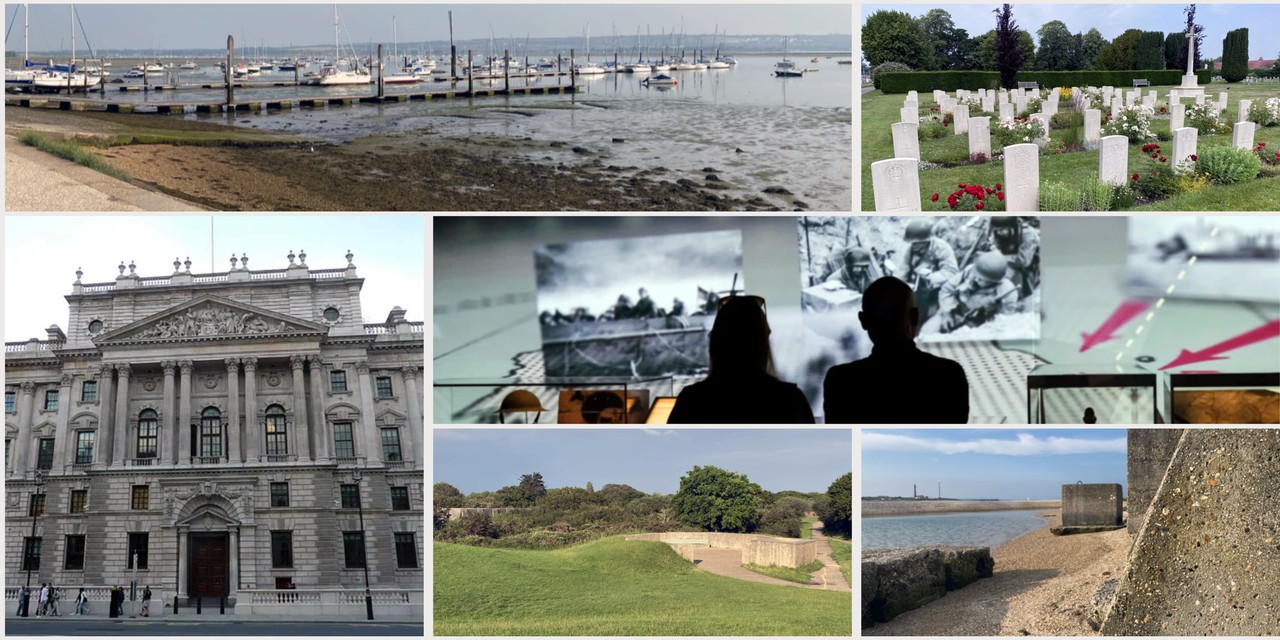This year marks the 80th anniversary of Operation Overlord, more commonly known as D-Day. It was on 6 June 1944 the Allies executed the historical landings on the Normandy beaches and drop zones. However, the success of D-Day was not an easy undertaking but rather the culmination of meticulous planning spanning several years. The United Kingdom served as the springboard and platform for this operation, with both military personnel and civilians playing integral roles in its execution. As General Dwight Eisenhower put it, “The eyes of the world are upon”. While soldiers, sailors, and airmen underwent rigorous training and preparation, hundreds of thousands of civilians contributed to the war effort, from constructing artificial harbours to building aircraft.
Normandy and the D-Day beaches understandably capture most of the attention, many wonder what significant sites in the United Kingdom offer insight into the extensive planning and preparations for D-Day. Exploring the rich history of Hampshire provides an excellent starting point. Often considered the heart of D-Day in the UK, Hampshire boasts many historical sites and stories waiting to be discovered.
A great starting point to begin this exploration is the D-Day Museum in Portsmouth. This is considered to be the no. 1 museum in the country dedicated to the D-Day landings. Here, visitors can immerse themselves in the preparations and landings through interactive exhibits. Notably, the museum houses the Landing Craft Tank, LCT 7074, which saw action at Gold Beach in Normandy. This special Landing Craft Tank can be fully explored and allows the visitor to appreciate the scale of the lands and naval craft that took part in the Operation Neptune phase of D-Day.
Venturing eastward from the D-Day Story Museum, visitors encounter Langston Harbour, home to a significant piece of D-Day history. Within the harbour area is a large concrete block sitting close to Hayling Island. To many, this may just look like an old pontoon. This block is one of the unused ‘Phoenix’ caissons, important breakwater components of the artificial Mulberry harbours crucial to the Allied supply chain. Such ‘Phoenix’ pieces were manufactured in secret at numerous locations in the UK. In Langstone Harbour on Hayling Island itself, for example, a construction site that was used as a manufacturing hub.
Nearby embarkation points, such as Gosport Hardway on Priory Road, provide further insight into the logistical complexities of D-Day. The original beach matting, more commonly known as ‘chocolate block’, is still in place and used to this day. It was from here that men and vehicles, including Sherman tanks, would embark in the first few days of June and then finally head across the channel to land on Sword Beach.
In the heart of Gosport lies Anns Hill Cemetery, an important reminder of the sacrifices made during the D-Day preparations and subsequent campaign. Here, a Commonwealth War Graves Commission Cemetery honours one casualty of the build-up and those who perished on D-Day, alongside German prisoners of war who succumbed to wounds within the first week of the Normandy campaign after being sent to the UK.
These locations offer just a glimpse into the D-Day history of the Portsmouth area, with numerous other sites waiting to be explored across England. Among these, the Churchill War Rooms in London stand out as a must-visit destination, providing further insight into the wartime leadership and strategy that shaped the course of history.
